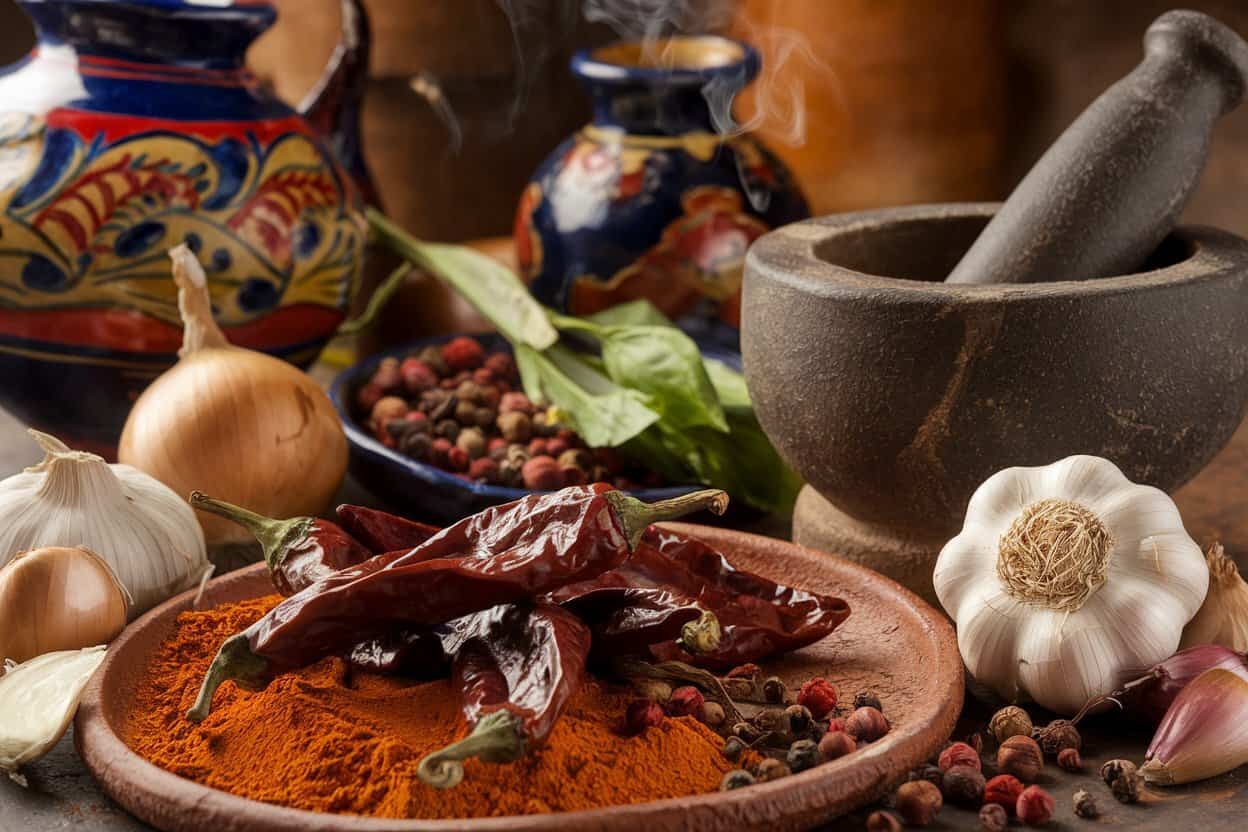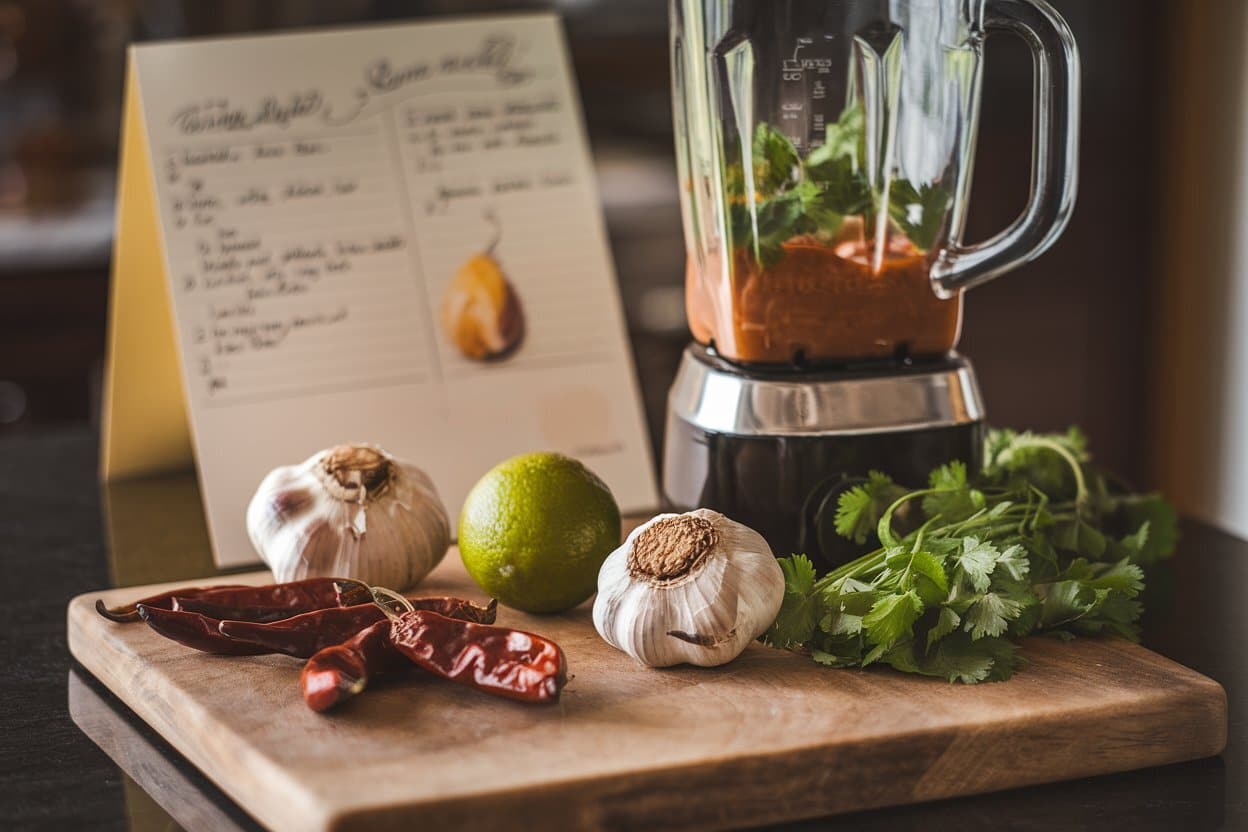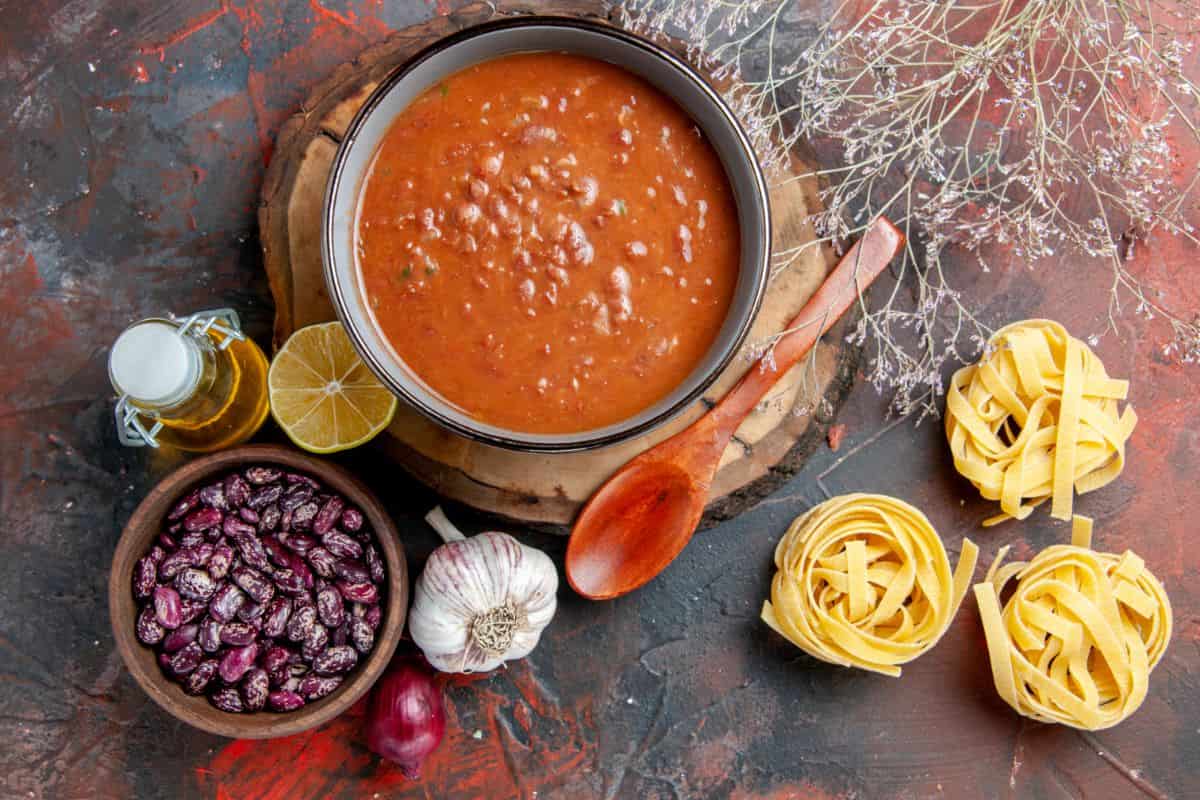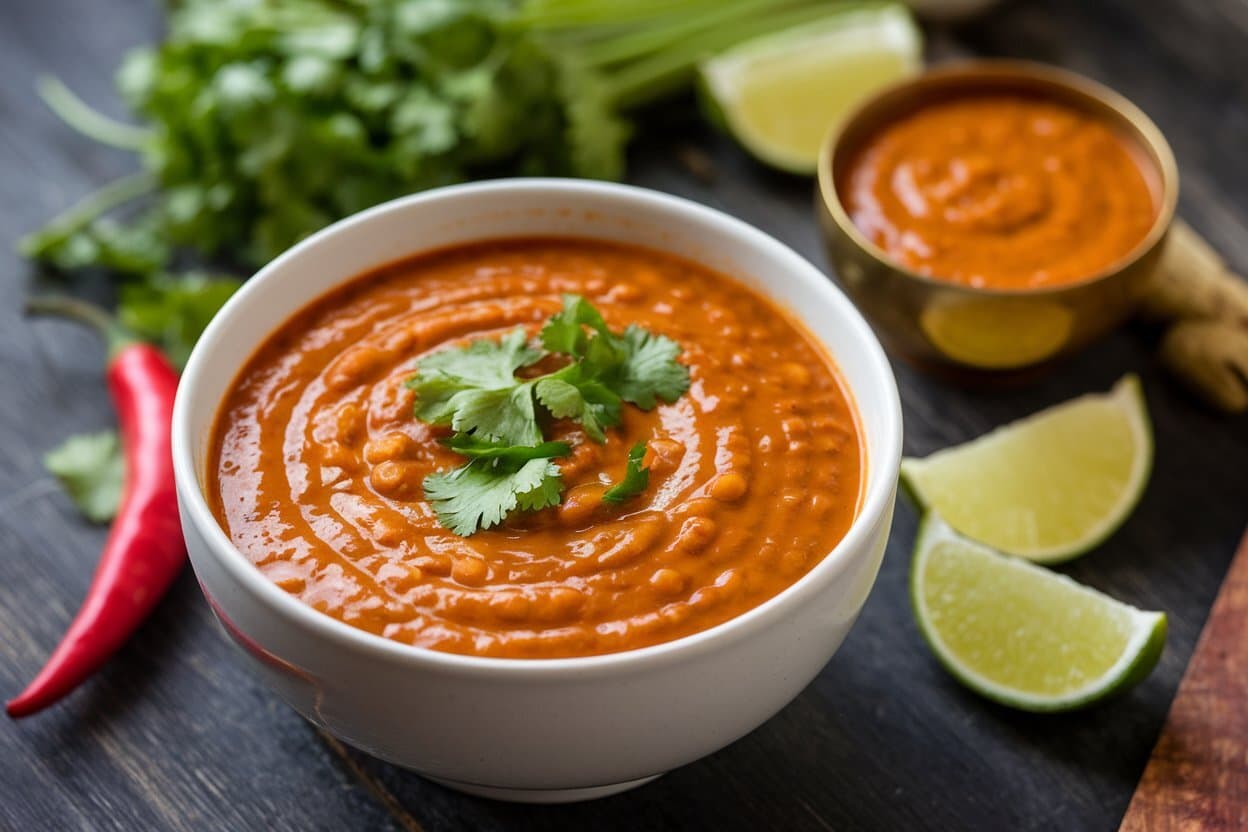Chipotle sauce is a culinary gem, offering a smoky, spicy kick that transforms ordinary dishes into extraordinary ones. With roots deep in Mexican cuisine, this versatile sauce has gained global popularity, reaching kitchens and restaurants worldwide. This detailed blog post will explore the origins of chipotle sauce, its diverse applications, and share a distinctive recipe for you to try at home.
What is Chipotle Sauce?
Chipotle sauce is a smoky, creamy, slightly spicy condiment made primarily from chipotle peppers. These peppers are ripened jalapeños that have been dried and smoked, giving them their characteristic flavor. The sauce typically includes a base of mayonnaise, sour cream, or Greek yogurt blended with chipotle peppers in adobo sauce, garlic, lime juice, and various seasonings.
The sauce’s flavor profile is rich and complex. It combines the smoky heat of the chipotle pepper with the tanginess of lime and the creaminess of the dairy base. It’s versatile for a variety of dishes, adding depth and a hint of heat without overpowering the other flavors.
The Origins of Chipotle Sauce

The History of Chipotle Peppers
To understand chipotle sauce, it’s essential to explore the origins of its star ingredient: the chipotle pepper. The word “chipotle” is derived from the Nahuatl word “chīlpoctli,” meaning “smoked chili.” Smoking jalapeños to create chipotle peppers dates back to ancient Mesoamerica, particularly among the Aztecs, who used this method to preserve their chili harvests.
Smoking the jalapeños extended their shelf life and imparted a unique smoky flavor that became integral to various Mexican dishes. Chipotle peppers have since become a staple in Mexican cuisine, utilized in a variety of dishes from salsas to stews.
The Evolution of Chipotle Sauce
While chipotle peppers have been used in Mexican cooking for centuries, chipotle sauce is a more recent creation as we know it today. The sauce likely evolved as chefs and home cooks sought ways to incorporate the bold flavor of chipotle peppers into a creamy, versatile condiment. By blending the smoky heat of chipotles with creamy elements like mayonnaise or sour cream, they created a sauce that could be easily drizzled, spread or dipped into a wide range of dishes.
Chipotle sauce gained popularity in the United States in the late 20th century, particularly with the rise of Tex-Mex cuisine. Today, it’s a beloved condiment in Mexican and American kitchens, celebrated for its ability to add depth and flavor to countless recipes.
Also Read: Lemon Beurre Blanc | A Classic French Sauce
The Many Uses of Chipotle Sauce

One of the reasons chipotle sauce has become so popular is its versatility. It can be used in various ways, making it a staple in home kitchens and professional restaurants. Here are some of the most common uses for chipotle sauce:
Tacos and Burritos
Chipotle sauce is a natural fit for Mexican dishes like tacos and burritos. Its smoky flavor complements the richness of meats like beef, pork, and chicken, while its creamy texture adds a luxurious mouthfeel. Drizzle it over your favorite taco fillings or spread it inside a burrito for an extra layer of flavor.
Sandwiches and Burgers
Are you looking to elevate your sandwich or burger game? Chipotle sauce is the answer. Spread it on a bun for a smoky, spicy kick that complements grilled meats perfectly, vegetables, or even a veggie burger. Its creamy texture also helps keep the sandwich moist, making each bite more satisfying.
Salad Dressing
Chipotle sauce can be thinned out with olive oil or vinegar to create a unique salad dressing. Its bold flavor adds a new dimension to salads, particularly those with hearty ingredients like black beans, corn, and avocado. A chipotle-infused dressing can transform a simple salad into a memorable dish.
Dipping Sauce
Whether serving fries, chicken tenders, or vegetables, chipotle sauce makes an excellent dipping sauce. Its smoky heat adds excitement to otherwise plain sides, making it a favorite at parties and casual gatherings. Mix it with other sauces, like ketchup or ranch, for a custom dip that suits your taste.
Marinade
Chipotle sauce can double as a marinade, especially for grilled meats and vegetables. The acidity from the lime juice helps tenderize the meat, while the chipotle peppers infuse it with a smoky flavor. Marinate chicken, pork, or beef in chipotle sauce before grilling for a dish that’s bursting with flavor.
Pasta Sauce
For a unique twist on pasta, try using chipotle sauce as a base. Its creamy texture makes it a great alternative to traditional tomato or Alfredo sauces, and its smoky flavor pairs well with grilled chicken, shrimp, or roasted vegetables. Finish it off with grated cheese and fresh herbs for a balanced meal.
Eggs and Breakfast Dishes
Chipotle sauce isn’t just for lunch and dinner; it can also enhance your breakfast. Drizzle it over scrambled eggs, add it to a breakfast burrito, or mix it into your avocado toast for a spicy start to your day—the smoky heat of the sauce pairs particularly well with eggs and breakfast meats like bacon or sausage.
Seafood
Chipotle sauce complements the delicate flavors of seafood, adding just the right amount of heat and smokiness. Enjoy it with grilled shrimp, fish tacos, or as a dipping sauce for crab cakes. The acidity in the sauce also helps balance the richness of the seafood, making it a well-rounded addition to your dish.
A Unique Chipotle Sauce Recipe

Now that you know the many uses of chipotle sauce, it’s time to try making your own. This recipe provides a distinct twist on traditional chipotle sauce, incorporating unexpected ingredients for added depth and flavor.
Ingredients
- 1 cup of mayonnaise (or Greek yogurt for a lighter alternative
- 2-3 chipotle peppers in adobo sauce (more for extra heat)
- One tablespoon adobo sauce (from the can)
- Two cloves garlic, minced
- One tablespoon of lime juice
- One teaspoon of honey (optional, for a touch of sweetness)
- ½ teaspoon smoked paprika (for extra smokiness)
- Salt and pepper to taste
Instructions
- Prepare the Chipotle Peppers: Start by removing the seeds from the Chipotle peppers if you prefer a milder sauce. Chop the peppers finely.
- Combine the ingredients: Using a blender or food processor, combine the mayonnaise (or Greek yogurt), chipotle peppers, adobo sauce, minced garlic, lime juice, honey, and smoked paprika. Blend until smooth.
- Adjust Seasoning: Sample the sauce and adjust with salt and pepper as needed. You can add a little water or more lime juice if you prefer a thinner sauce.
- Refrigerate: For best results, refrigerate the sauce for at least 30 minutes before serving. This allows the flavors to meld together.
- Serve: Use the chipotle sauce as a dip, spread, or topping for your favorite dishes. It can be stored in an airtight container in the refrigerator for up to a week.
Tips for Customizing Your Chipotle Sauce
- Add Extra Heat: Add more chipotle peppers or a pinch of cayenne pepper if you like extra spicy sauce.
- Make It Sweeter: For a sweeter sauce, increase the amount of honey or add a bit of maple syrup.
- Go Dairy Free: For a dairy-free version, use vegan mayonnaise or substitute with cashew cream.
Also Read: Meatloaf Recipe with the Best Glaze Ever
The Health Benefits of Chipotle Sauce

Beyond its flavor, chipotle sauce offers several health benefits thanks to its ingredients. Chipotle peppers, the highlight of the sauce, are high in vitamins A and C, both of which are potent antioxidants that support immune health and preserve skin integrity. They also contain capsaicin, the compound that gives them their heat, which has been associated with numerous health benefits, such as pain relief, enhanced metabolism, and potential cancer prevention.
The lime juice in chipotle sauce adds a dose of vitamin C and helps aid digestion, while garlic is known for its anti-inflammatory and immune-boosting properties. If you choose to use Greek yogurt as the base, you’ll also benefit from probiotics, which support gut health.
Chipotle Sauce in Global Cuisine
While chipotle sauce is rooted in Mexican cuisine, its popularity has spread across the globe. In the United States, it’s a common ingredient in Tex-Mex dishes, while in Europe, it’s often used in fusion cuisine, blending traditional European flavors with the smoky heat of chipotle. In Asia, chefs have started incorporating chipotle sauce into dishes like sushi and stir-fries, adding a smoky, spicy element that complements the bold flavors of the region’s cuisine.
This global appeal is a testament to Chipotle sauce’s versatility and the universal love for its unique flavor profile.
Conclusion
Chipotle sauce is more than just a condiment; it’s a flavor powerhouse that can transform any dish. Chipotle sauce has earned its place in kitchens worldwide, from its ancient roots in Mexican cuisine to its modern-day global appeal. Chipotle sauce offers endless possibilities, whether you’re looking to spice up your tacos, add depth to your pasta, or create a new favorite sandwich spread.
You can modify the flavor to suit your taste preferences and dietary preferences by making your own chipotle sauce at home. Plus, you’ll have a versatile sauce that can elevate any meal, from breakfast to dinner.
Frequently Asked Question (FAQ)
Chipotle sauce is a creamy and flavorful condiment made from smoked and dried jalapeño peppers (chipotle), combined with ingredients like garlic, vinegar, and spices. It has a rich, smoky, and slightly spicy taste.
Chipotle sauce originates from Mexico, where chipotle peppers have been used in traditional cooking for centuries. The sauce itself is a modern adaptation that blends the smoky flavor of chipotle peppers with other ingredients to create a versatile condiment.
Chipotle sauce can be used in a variety of ways, including as a marinade for meats, a topping for tacos and sandwiches, a dip for chips and vegetables, or a flavor enhancer in soups, stews, and salads.
Chipotle sauce can offer health benefits such as providing antioxidants from the peppers, boosting metabolism due to its spicy components, and adding flavor without the need for excessive salt or sugar. However, it’s important to consume it in moderation.
Yes, you can easily make chipotle sauce at home by blending ingredients like chipotle peppers in adobo sauce, garlic, lime juice, mayonnaise or yogurt, and spices. Adjust the recipe to your taste preference for spiciness and creaminess.
Chipotle sauce pairs well with dishes like grilled meats, fish tacos, roasted vegetables, sandwiches, burgers, and even as a dressing for salads. Its smoky and spicy flavor complements a wide range of foods.

















